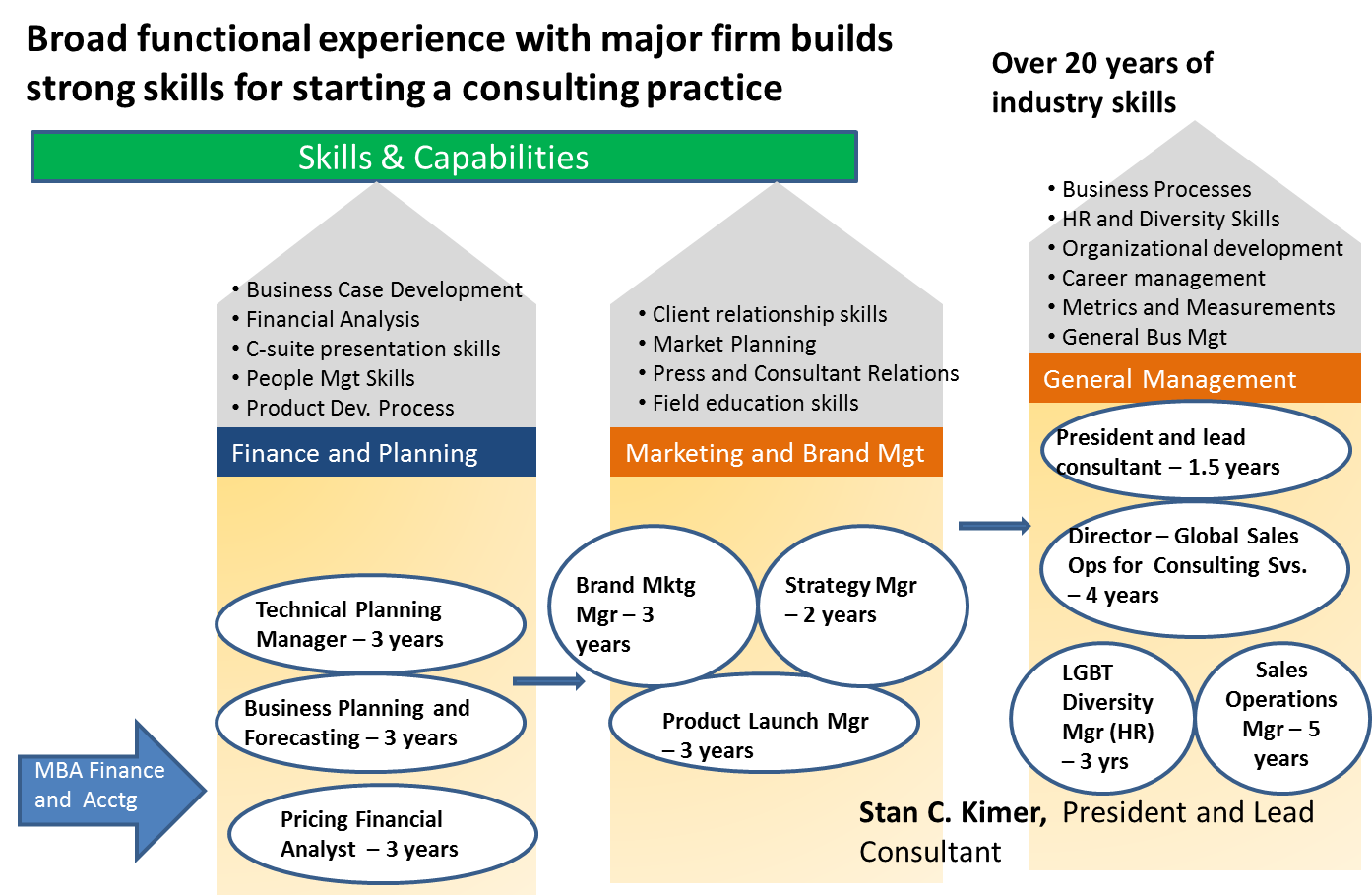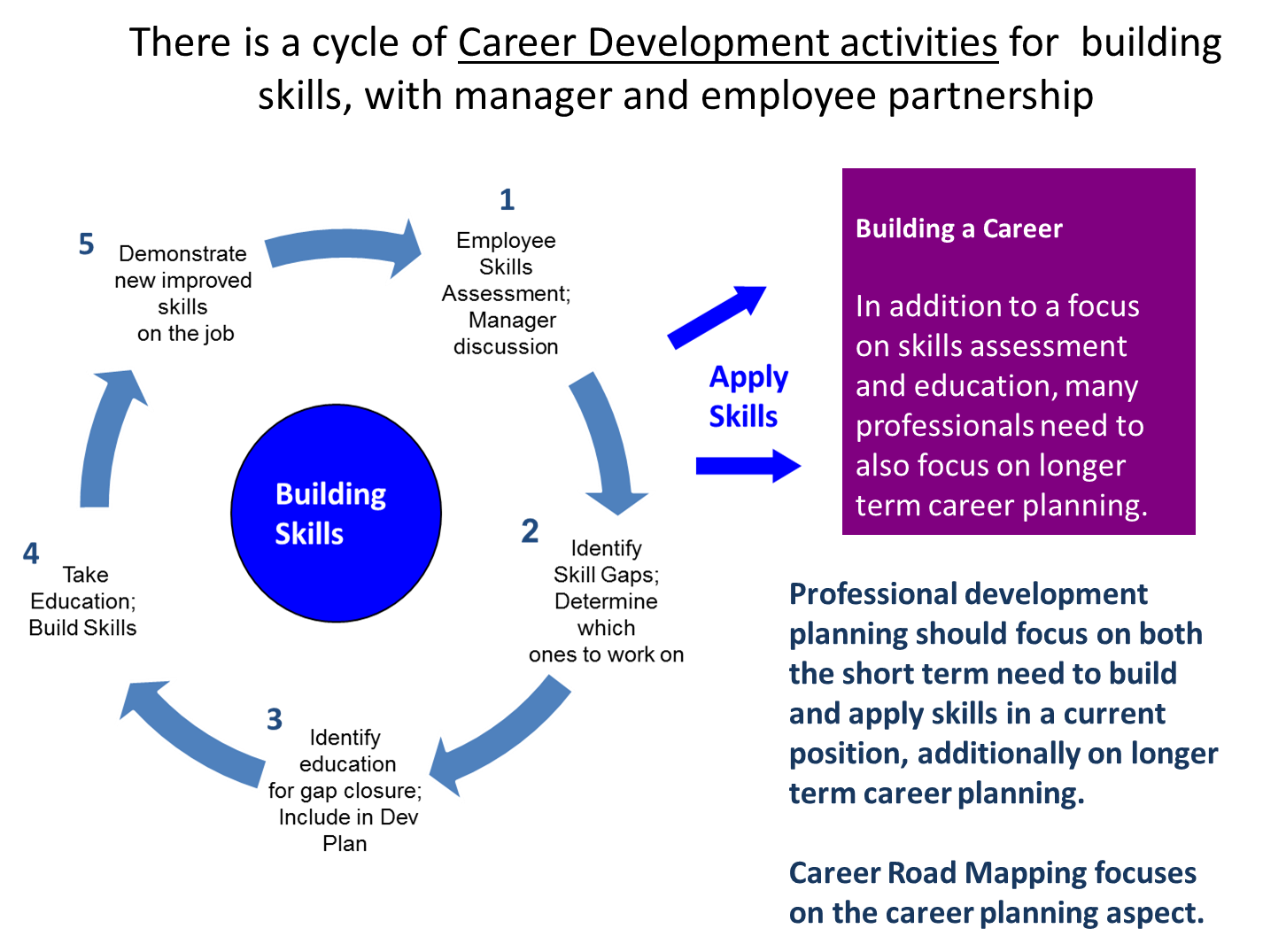In a market characterized by cutbacks and disengaged employees, decision makers are scrambling to find affordable and effective ways to bring in and retain top talent. In today’s expert Q&A, Stan Kimer, president of Total Engagement Consulting, explains how to do just that.
Let’s start from the top — what is “career mapping”?
Career mapping is a way of graphically showing on a one-page chart a person’s career progression or development. A typical career map will include a person’s:
- Job progression over time
- List of important transferable skills that they acquired at different times in their career to help them advance
- Pertinent information like degrees, certifications and involvement in volunteer or community activities that help them build skills
- Short, pithy tag line characterizing their career
In addition, when done within a corporate or organizational context, a career map could also be tagged to a particular corporate career development theme. More often, a colorful one-page graphical depiction of a person’s career can communicate much more than a flat text only resume. For example, I have included my own career map below.

Career planning is often viewed as something done by the individual. Why should companies to get more involved in this process?
Assisting their employees with career planning and providing examples of career paths within their company can be one of the key ways for companies to engage their people and get them more enthused about staying and contributing within a company. Often, skilled people leave their companies because they are not aware of the wide range of career possibilities open to them. They may only be aware of jobs within their function or unit, and get discouraged if they do not see anything to meet their own career goals.
Certainly, everyone should take personal ownership over their career development, but corporations can provide valuable tools to assist employees in this critical venture.
What is special about the Total Engagement Career Mapping process is that within a company or organization, it is based on actual career maps of a diverse set of successful people within that company. Contrived or theoretical career paths often fall flat with employees, but seeing a wide range of examples of successful people truly resonates with employees. Often an employee can find 3 or 4 career maps of people with whom they have things in common, and that provides encouragement and inspiration.
When and how should a company begin engaging in the career mapping process with their employees?
Actually there are two steps in terms of engaging employees within the career mapping process. The first step is to provide a presentation or tool that shows several examples of diverse careers of actual, successful people within the company. That can even start before hiring! It would be a great recruiting tool. For a top candidate with multiple offers, the value proposition of career development assistance could be a decision tipping point ( «Tweet this ).
In terms of then engaging employees in their own career mapping process, it could be done annually or semi-annually and built into existing corporate development review processes. Almost all corporations have an annual or semi-annual process where managers sit down with employees and review skills required for their job, what skills they are weakest in, and putting in place plans to improve those skills. But a longer career horizon needs to be added to that process. In addition to looking at improving skills in the job they are in today, employees should be looking at where they may want to be 2, 5 or 10 years down the road and activities they can do now to start building their longer term career and making themselves ultimately more valuable to the company.
The ideal annual or semi-annual employee development plan should have a good mix of short-term and long-term development reflected. See graphic below:

Given the frequency of cutbacks in today’s market, why should companies invest in career mapping?
“The cost of a career mapping program for a company can be recovered by retaining only one person who would have otherwise left.”
Assisting employees with career development is one of the wisest investments companies can make, especially in times of cutbacks ( « Tweet this ). Most companies do not realize that their largest investments are not in plants and machinery, inventory or property; but that most companies’ largest investment is in paying their people! Human capital is the most expensive and most critical resource to a company’s success! And engaged employees very often can provide the competitive advantage in an environment where it is often difficult to differentiate among competitors.
Many recent studies, including those from SHRM (Society for Human Resource Management), cite that employee satisfaction or engagement is currently at an all time low, and that over a third of employees plan to look for a new job outside their current company when the economy improves. And it is not going to be the lower performers who will look for something better and leave; more often it will be the top talent. Loss of productivity from unengaged employees working far below their peak can cost firms millions of dollars. And if a desired skilled person leaves the company, it can take over a year’s salary in costs of recruiting and onboarding a replacement. Often, the cost of a career mapping program for a company can be recovered by retaining only one person who would have otherwise left.
Other studies show that one of the best ways of engaging employees and keeping them productive on the job is provide tools to assist them with their skills and career development. In addition, when a company is progressive and demonstrates that it is truly concerned about their employees’ long term development, word gets around in the community and that employer will be viewed as an “employer of choice” with top talent coming to them to work!
Is there anything else you would like to say about this topic?
Yes, I do want to emphasize that one of the most important elements of a career maps is the various transferable skills that a person acquired throughout his or her career. Often job titles and positions change, but even so a key skill acquired within a totally different job or industry could still be transportable and desirable in a totally new environment. For example, a teacher in the public schools can be building key teaching and mentoring skills that can then be transferable to a training or management role in a corporate setting.
People should never minimize their past early experience, no matter how menial they feel the job may have been. Multiple key skills can be acquired in any job.
About the Expert
Stan C. Kimer is recognized as an internal and external consultant with unique skills in employee development using his innovative career mapping methodology; and in diversity management with a specialization in the LGBT (Lesbian, Gay, Bisexual, Transgender) workplace and marketplace. After a successful and diverse 31-year career working across practically every function within IBM, Stan retired in 2010 and started Total Engagement Consulting by Kimer as a vehicle for focusing on his passion for career development and diversity.
Learn more on TotalEngagementConsulting.com and connect on Facebook.








